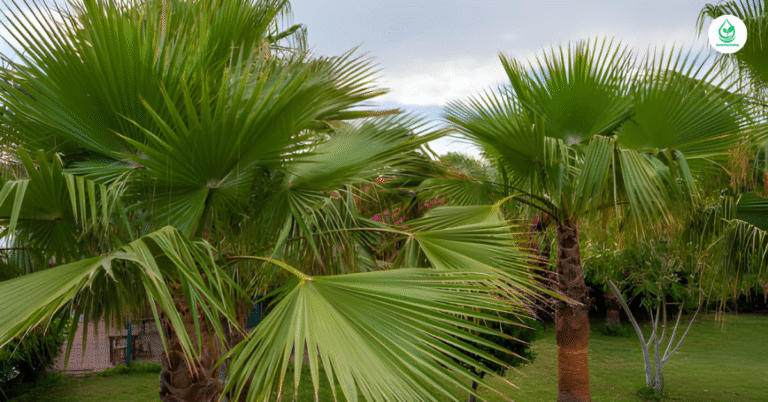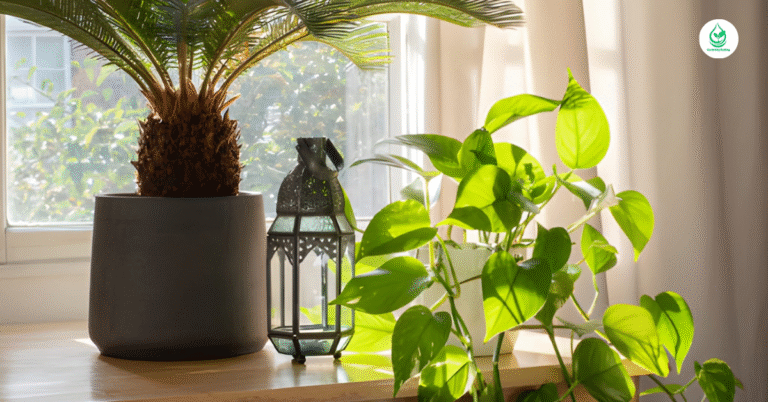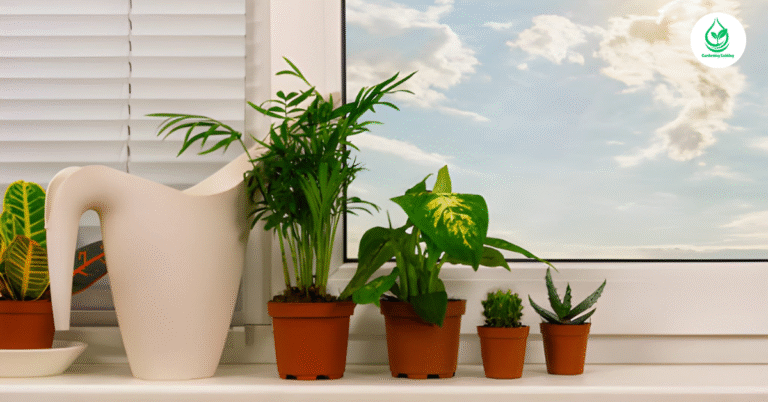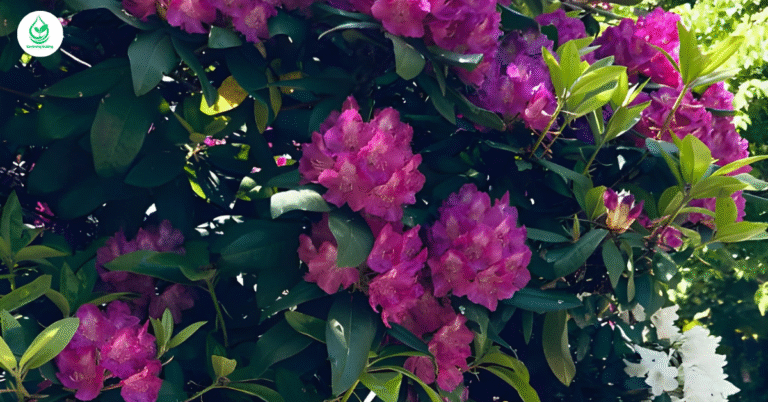6 Hibiscus How to Grow, Care, and Enjoy These Tropical Beauties
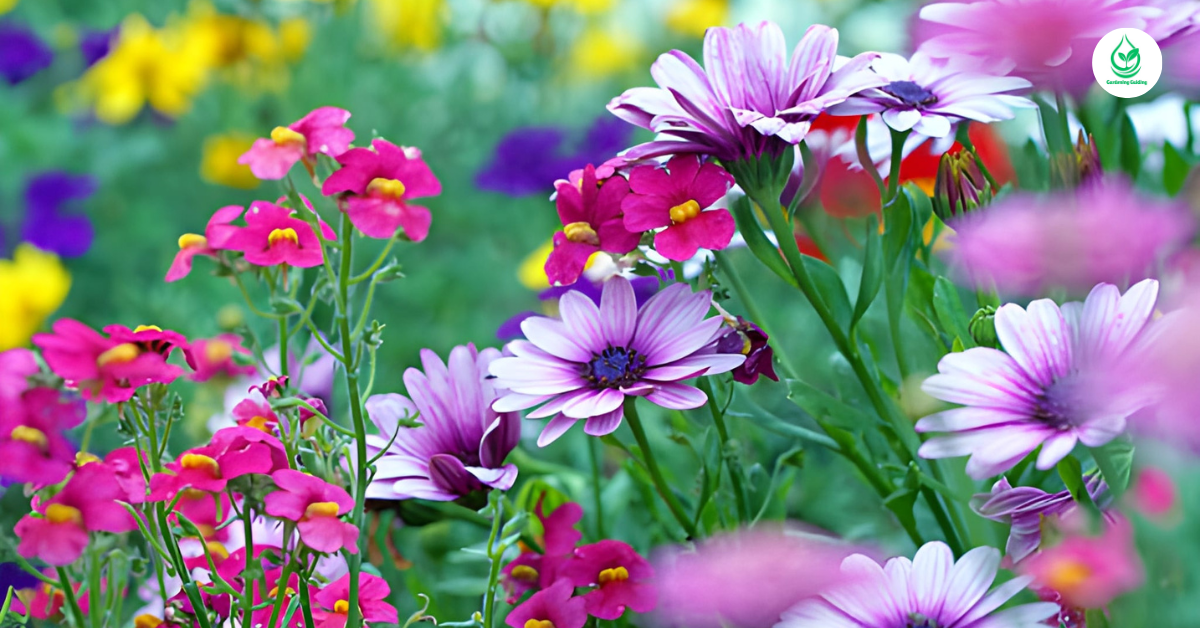
Introduction
When it comes to adding instant color, charm, and a tropical vibe to your garden, hibiscus plants stand unmatched. Their bold, trumpet-shaped flowers and lush green leaves can turn even the simplest space into a paradise. The 6 Hibiscus varieties we’ll explore in this guide are not only visually captivating but also easy to grow with the right knowledge.
From the classic Hibiscus rosa-sinensis with its bright petals to the edible Hibiscus sabdariffa, each plant has its own story, care routine, and beauty secrets. Whether you’re planting them in your backyard, along fences, or in pots on your balcony, this article will teach you everything you need to know from soil preparation and sunlight requirements to pruning, pest control, and propagation techniques.
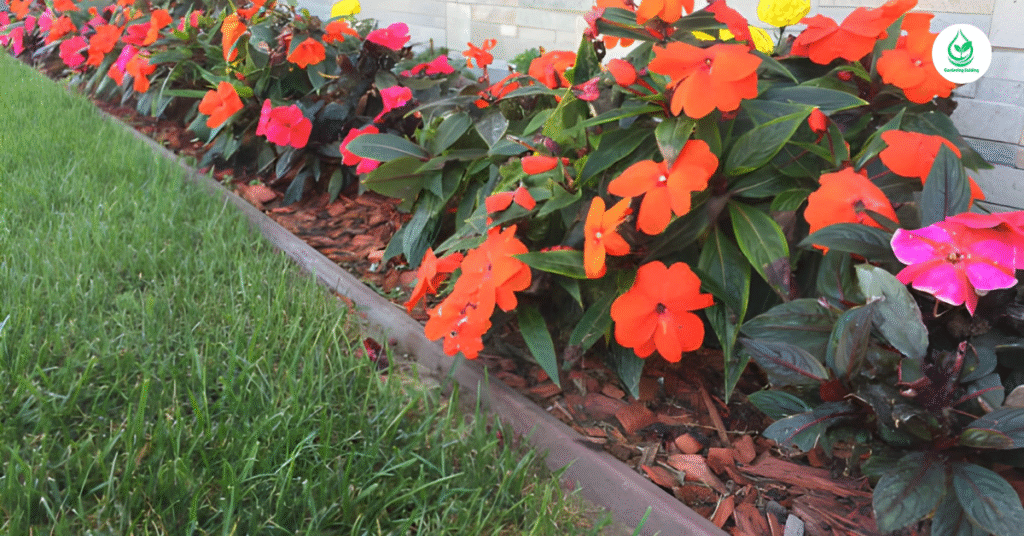
Let’s discover the six magnificent types of hibiscus that every plant lover should grow.
Hibiscus Rosa-Sinensis The Classic Tropical Star
Understanding Its Tropical Nature
The Hibiscus rosa-sinensis, often called the Chinese hibiscus or shoe flower, is the true symbol of tropical elegance. It’s known for its large, glossy leaves and wide blooms in brilliant shades of red, yellow, orange, pink, and white. This plant thrives in hot, humid climates and adds a festive splash of color to patios and gardens.
How to Grow Hibiscus Rosa-Sinensis
Start with nutrient-rich, well-drained soil. A mixture of garden soil, compost, and sand works well. This hibiscus loves 6–8 hours of direct sunlight daily. Water it regularly, ensuring that the topsoil remains slightly moist but never soggy. You can grow it directly in the ground or in large containers with drainage holes.
Care Tips for Vibrant Blooms
To keep this hibiscus blooming all year round, feed it with a potassium-rich fertilizer every two weeks during summer. Regular pruning encourages new growth and prevents the plant from becoming leggy. Always remove dead flowers and weak branches to help the plant focus its energy on producing new buds.
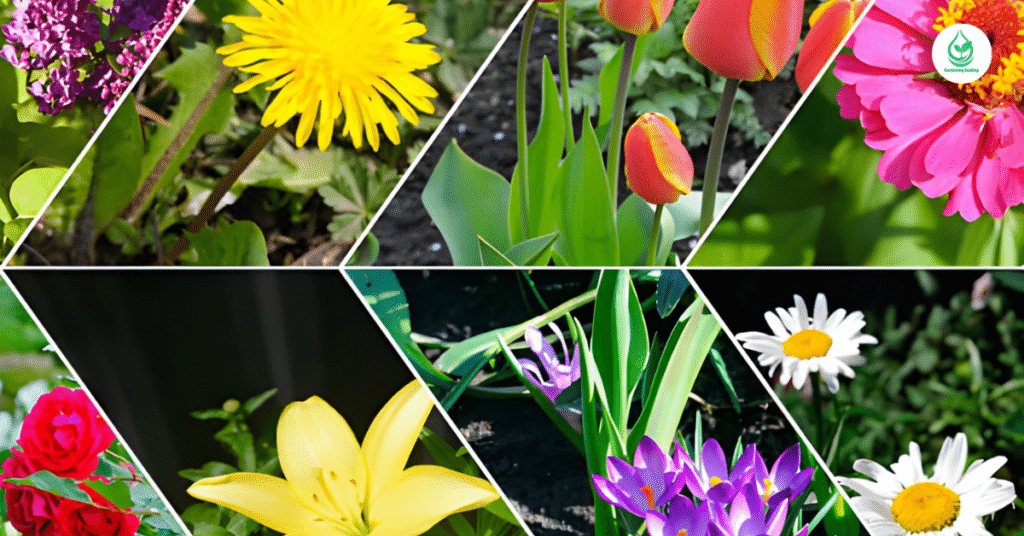
Fun Fact & Use
In many cultures, hibiscus petals are used to make herbal teas and natural hair conditioners. They are rich in antioxidants and vitamin C, helping promote healthy hair and skin.
Hibiscus Syriacus – The Rose of Sharon
What Makes It Unique
If you live in a region with colder winters, the Hibiscus syriacus (Rose of Sharon) is your perfect choice. It’s a hardy shrub that can survive frost and still bloom beautifully from late summer to early fall. Its trumpet-shaped flowers come in soothing pastel tones of lavender, white, pink, and purple.
How to Grow Hibiscus Syriacus
This variety loves full to partial sun and adapts to almost any well-drained soil type. Plant it in early spring to give roots time to establish before summer. Space each shrub about 3 feet apart for proper air circulation. Water it deeply once a week, especially during dry spells.
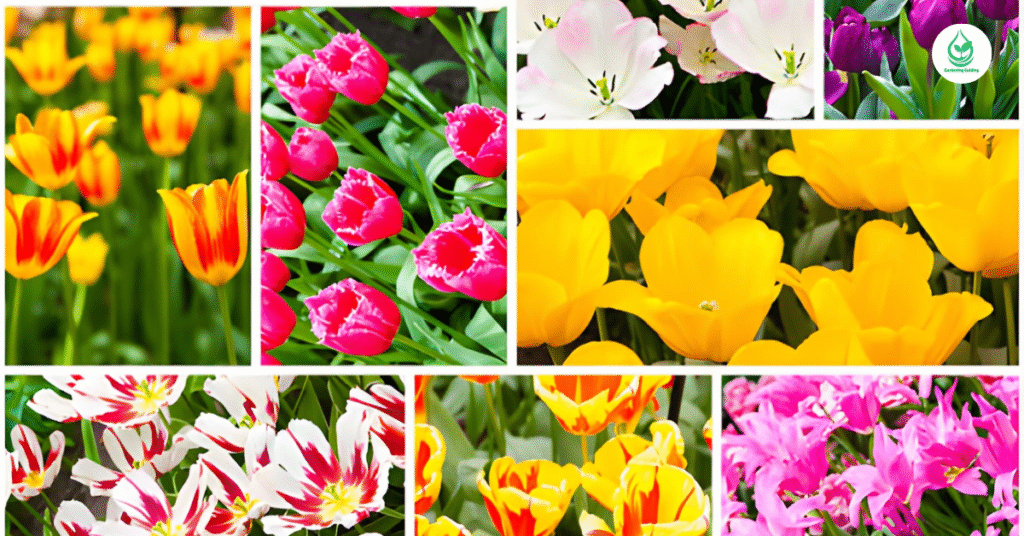
Maintenance Tips
Rose of Sharon doesn’t require much care once established. However, pruning in late winter encourages more flowers in the next season. You can also shape it into a small flowering tree for decorative landscapes.
Why Gardeners Love It
This variety attracts butterflies, bees, and hummingbirds, making it perfect for wildlife-friendly gardens. Its resilience and low maintenance make it one of the best flowering shrubs for temperate zones.
Hibiscus Moscheutos – The Giant Swamp Mallow
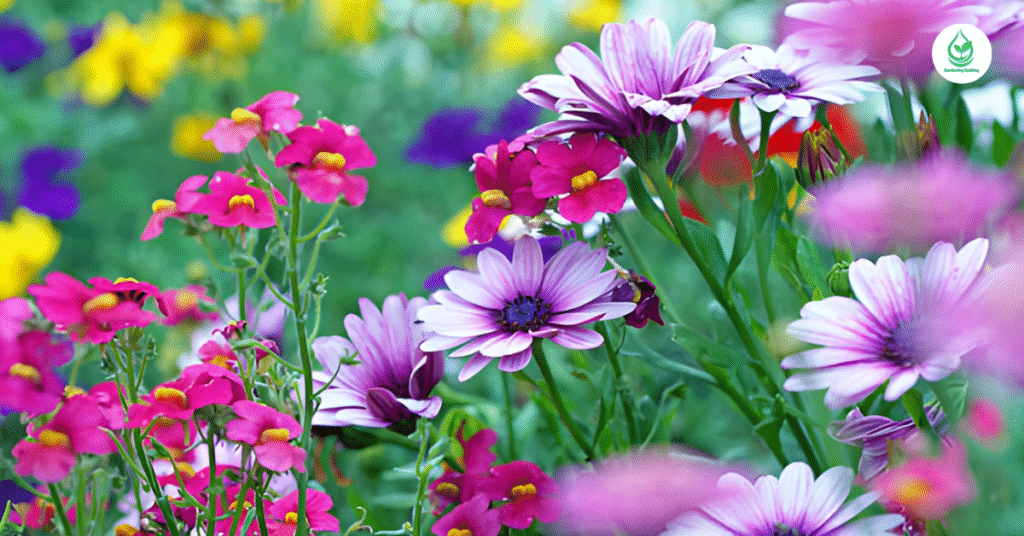
Introduction to Swamp Mallow
Imagine a flower as big as your hand — that’s the Hibiscus moscheutos, also called swamp rose mallow. This North American native produces enormous, show-stopping flowers in shades of pink, white, and red, often with a darker center.
Ideal Growing Conditions
Unlike most hibiscus varieties, this one loves wet soil. It’s ideal for planting near ponds, streams, or low-lying garden areas. It thrives under full sunlight, requiring at least 6 hours of exposure daily. Keep the soil consistently moist but not waterlogged.
Seasonal Care & Pruning
During winter, this plant dies back to the ground but don’t worry it will re-emerge in spring with new, healthy growth. Cut it down after frost and apply a layer of mulch to protect the roots.
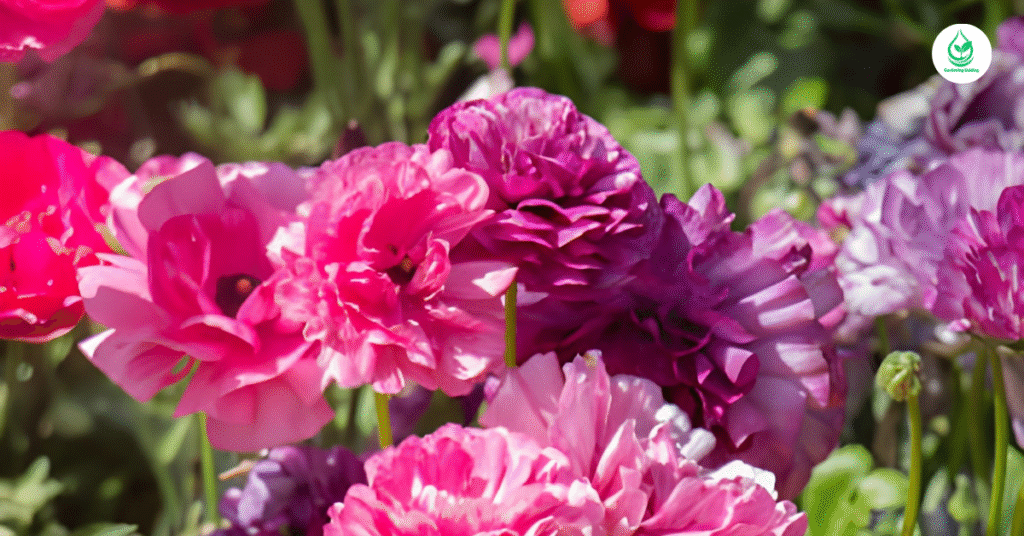
Why It’s Special
The Swamp Mallow is famous for attracting pollinators, especially monarch butterflies. It adds dramatic height and color to gardens, making it a favorite for creating tropical-style landscapes even in non-tropical areas.
Hibiscus Sabdariffa The Edible Roselle
Why Gardeners Love Roselle
Hibiscus sabdariffa, also known as Roselle, is a plant of both beauty and purpose. Beyond its striking red stems and flowers, it’s grown for its edible calyces, used to make the famous hibiscus tea. The tea has a tart, cranberry-like flavor and is packed with antioxidants.
How to Grow Hibiscus Sabdariffa
Plant Roselle in full sun after the danger of frost has passed. It thrives in warm, humid climates and prefers sandy or loamy soil with good drainage. Space the plants about 3 feet apart to allow room for branching. Water regularly to keep the soil moist but never soggy.
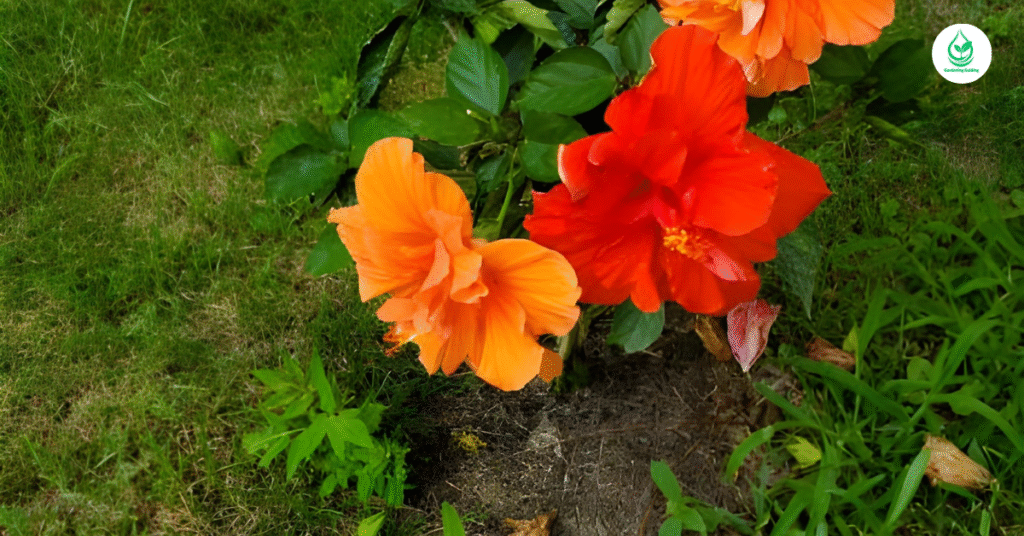
Harvesting and Usage
After flowering, the red calyces appear harvest them once they become plump. They can be dried for tea or used fresh to make jam, syrup, or sauces. The young leaves are also edible and slightly tangy, great for salads or soups.
Health Benefits
Roselle is known for its blood pressure-lowering and immune-boosting properties. It’s rich in vitamin C, iron, and flavonoids, making it both a decorative and a healthy addition to your garden.
Hibiscus Mutabilis – The Confederate Rose
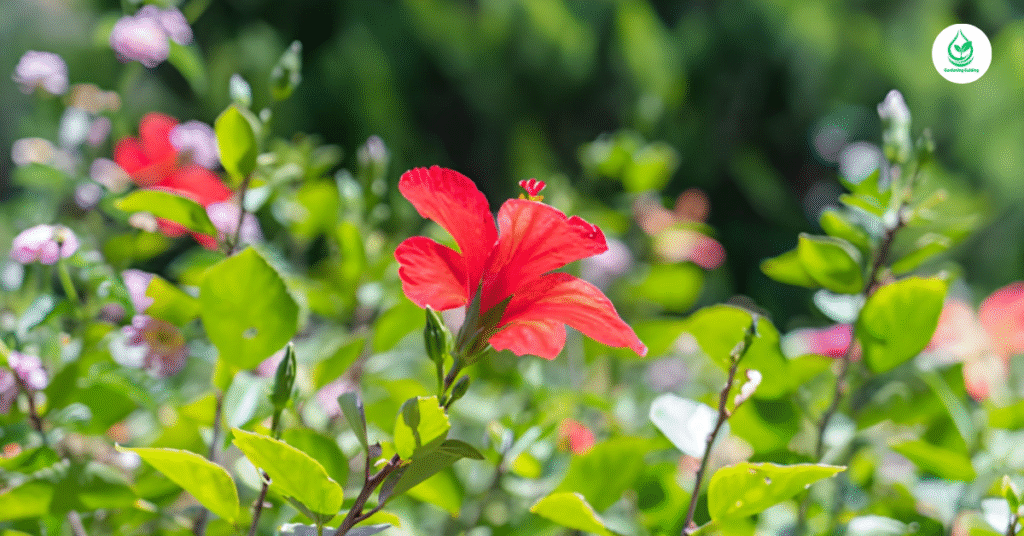
A Flower That Changes Color
The Hibiscus mutabilis, also called the Confederate Rose, is truly magical. Its blooms open as white in the morning, turn pink by midday, and deepen into red by evening. You’ll see multiple colors on the same plant a breathtaking sight!
Growing the Confederate Rose
This hibiscus loves warm weather and plenty of sunshine. It grows best in rich, moist soil that drains well. It can reach up to 10 feet tall, so give it space in your garden bed or along fences. Water regularly, especially during summer, but avoid overwatering.
Extra Care Tips
Prune it in late winter to control its height and remove old wood. Add compost annually for extra nutrients. It’s a fast-growing plant that rewards you with giant, multi-color flowers from summer to autumn.
Symbolism and Garden Appeal
In many cultures, the Confederate Rose symbolizes transformation and beauty through change, representing life’s evolving nature. It’s a favorite for photographers and garden lovers who adore dynamic blooms.
Hibiscus Acetosella – The Red Leaf Hibiscus
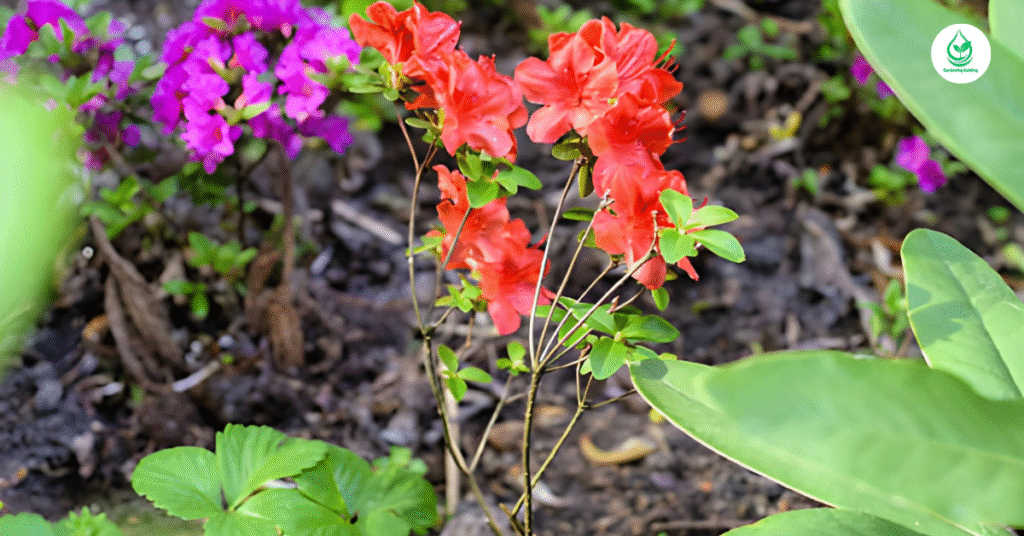
Appearance & Traits
Unlike the others, Hibiscus acetosella is grown more for its foliage than flowers. Its deep red to purple leaves resemble maple leaves, adding a bold contrast to any garden. The small crimson flowers that appear in late summer are a lovely bonus.
How to Grow Red Leaf Hibiscus
This variety thrives in full sunlight but tolerates partial shade. It prefers loamy, well-draining soil. Water regularly during dry spells but avoid standing water. It’s moderately drought-tolerant and can be grown in containers or garden beds.
Why It’s a Favorite
The red foliage creates a stunning backdrop for green and flowering plants. Gardeners love using it for borders, hedges, or tropical-themed gardens. The young leaves are edible with a tangy flavor, used in some African and Asian cuisines.
Bonus Tip
Pinching the tips encourages bushier growth and more foliage density. This hibiscus variety pairs beautifully with green ferns, palms, and flowering vines.
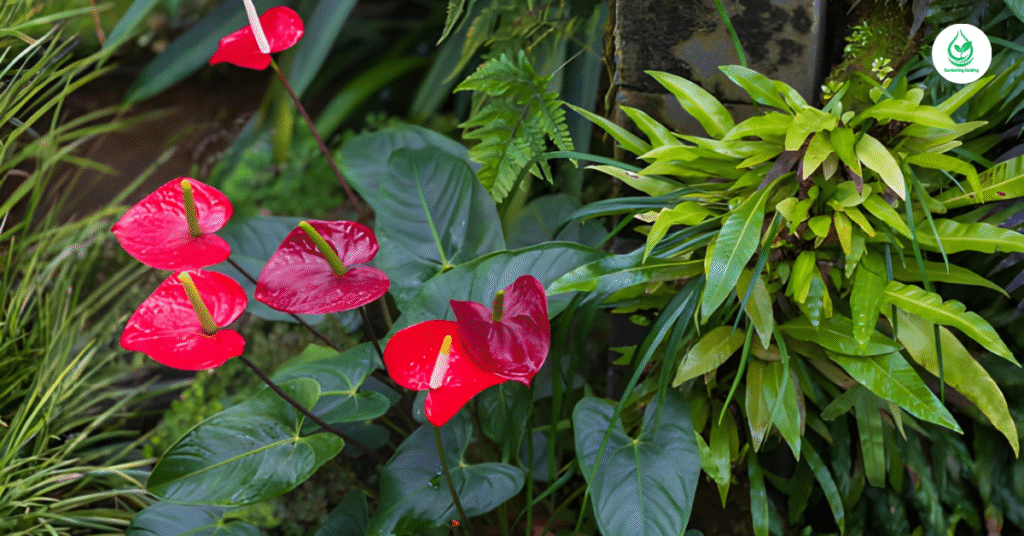
Advanced Care Tips for Hibiscus
Watering Routine
Hibiscus plants love consistent moisture, but not soggy soil. Water deeply whenever the top inch feels dry. In summer, this might mean watering daily, while in winter, reduce frequency to prevent root rot. Always ensure the pot or ground drains well, as hibiscus roots are sensitive to excess water.
Fertilizing for Maximum Blooms
Fertilizing is key for vibrant flowers. Use a high-potassium, low-phosphorus fertilizer (like 10-5-20) every two weeks during the growing season. Organic options like compost, banana peels, and seaweed fertilizer also work wonders. Stop fertilizing in winter when the plant goes dormant.
Pruning and Shaping
Pruning helps keep your hibiscus lush and full. Remove dead or weak branches and trim back leggy growth. For container plants, light pruning throughout the year maintains shape, while garden hibiscus should be pruned in late winter to prepare for spring.
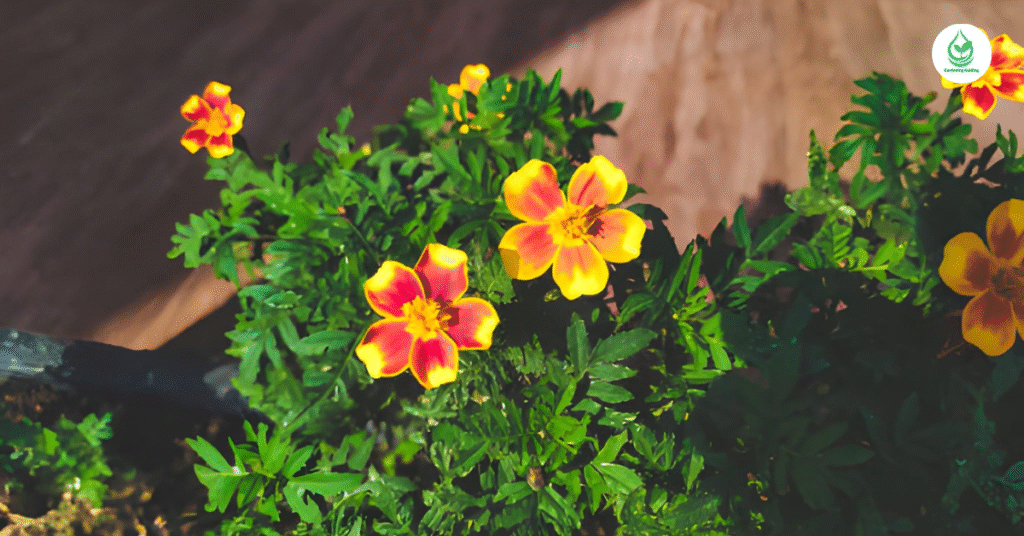
Propagation Techniques
You can easily propagate hibiscus from stem cuttings. Cut a 6-inch healthy stem below a leaf node, dip it in rooting hormone, and plant it in a mixture of perlite and peat moss. Keep it moist and warm, and roots will form in 3–4 weeks. This is a great way to expand your garden or gift a plant to a friend.
Pest and Disease Management
Hibiscus can attract pests like aphids, spider mites, and whiteflies. Wipe leaves with a damp cloth or spray neem oil weekly to keep them at bay. Avoid overwatering to prevent fungal diseases like root rot or leaf spot. Regular inspection keeps your hibiscus healthy and blooming.
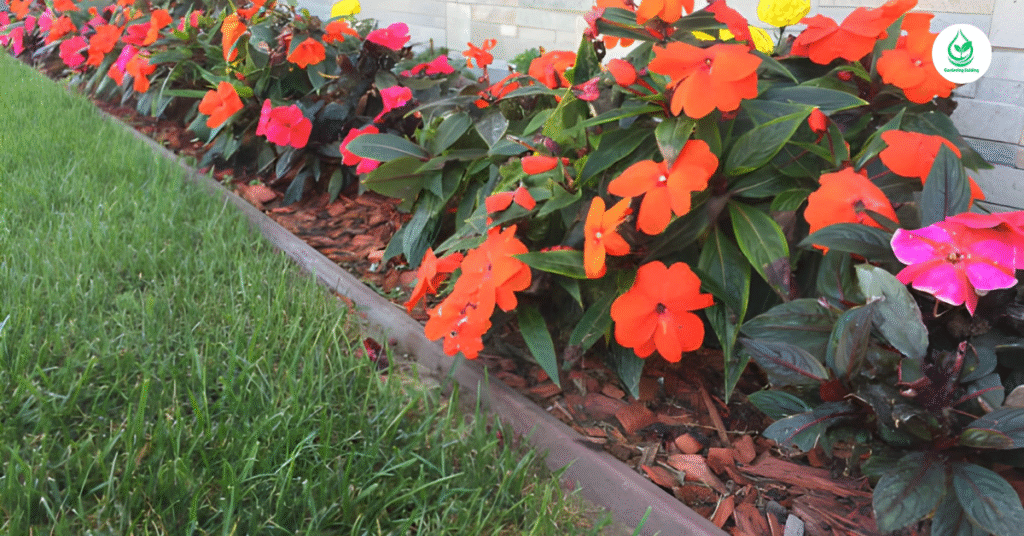
5 Pros of Growing Hibiscus
- Beautiful Blooms All Year Round
Hibiscus flowers are stunning, blooming in various colors and shapes. With proper care, you can enjoy continuous flowering from spring to autumn. - Versatile Use
From gardens to balconies, hibiscus can grow in pots or directly in soil. Edible varieties like Hibiscus sabdariffa are also used for teas, syrups, and skincare. - Attracts Pollinators
The bright blooms naturally attract butterflies, hummingbirds, and bees, creating a lively ecosystem in your garden. - Health Benefits
Hibiscus tea is rich in antioxidants, supports heart health, and helps regulate blood pressure naturally. - Tropical Aesthetic
Its bold, exotic flowers instantly transform any space, making it perfect for tropical-themed landscapes or cozy patios.
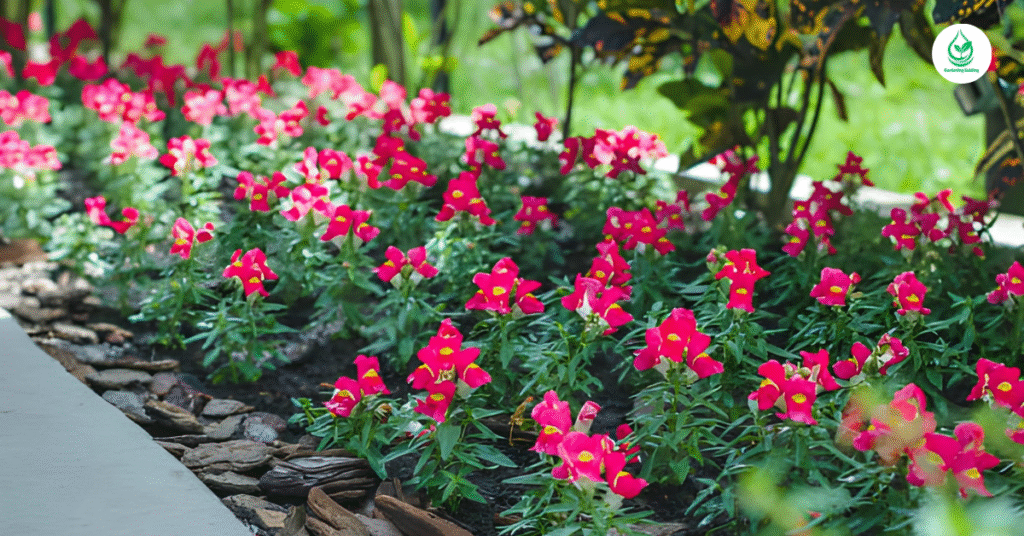
5 Cons of Growing Hibiscus
- Sensitive to Cold Weather
Most hibiscus varieties don’t tolerate frost, making them difficult to grow in colder regions without indoor care. - Requires Regular Watering
Hibiscus plants need consistent moisture, and skipping watering can quickly lead to drooping leaves. - Pest-Prone
Aphids and spider mites often attack tender leaves, requiring constant inspection and maintenance. - Short-Lived Blooms
Each hibiscus flower typically lasts only one day, though new ones replace them quickly. - Frequent Feeding Required
To maintain continuous blooms, they need regular fertilization — missing feedings can result in fewer flowers.
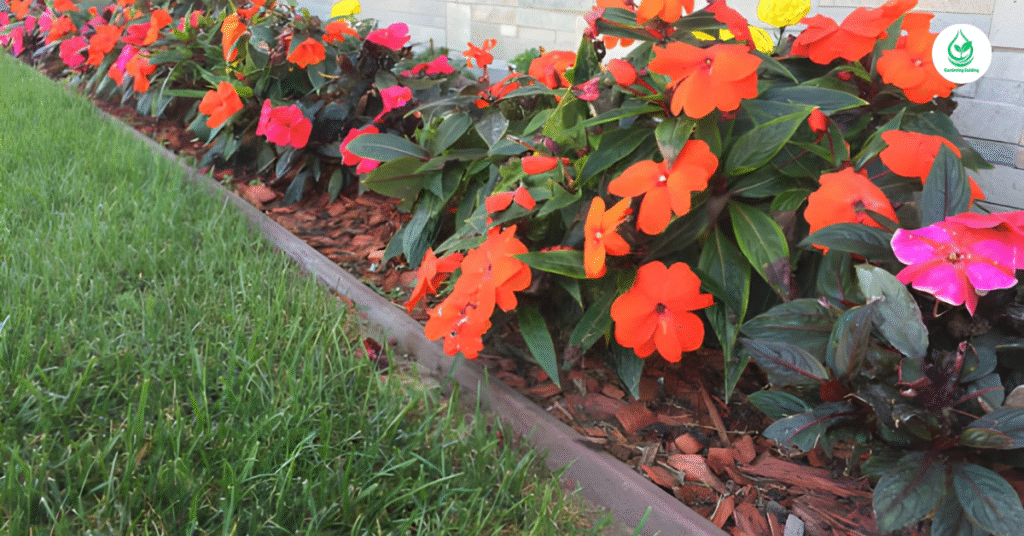
10 FAQs About Hibiscus
1. Can hibiscus grow indoors?
Yes, with enough sunlight. Place it near a bright window that gets at least 6 hours of light daily.
2. How often should I repot my hibiscus?
Every 2–3 years, or when the roots start circling the pot base.
3. Can I use rainwater for hibiscus?
Yes! Rainwater is slightly acidic, which hibiscus loves, unlike hard tap water that may cause leaf spots.
4. Why are my hibiscus buds dropping?
This happens due to stress from overwatering, poor drainage, or temperature changes.
5. How tall can hibiscus grow?
Depending on the variety, they can grow from 2 feet to over 10 feet tall.
6. What type of soil is best?
Loamy, well-drained, and slightly acidic soil enriched with organic compost is ideal.
7. Should I prune hibiscus regularly?
Yes, pruning encourages new growth and prevents legginess.
8. When does hibiscus bloom?
Typically from spring through late fall, though tropical types can bloom year-round.
9. Can hibiscus survive heavy rain?
Yes, but prolonged waterlogging can damage roots. Ensure proper drainage.
10. Do hibiscus plants need humidity?
Yes, they thrive in humid environments. If indoors, mist the leaves occasionally.
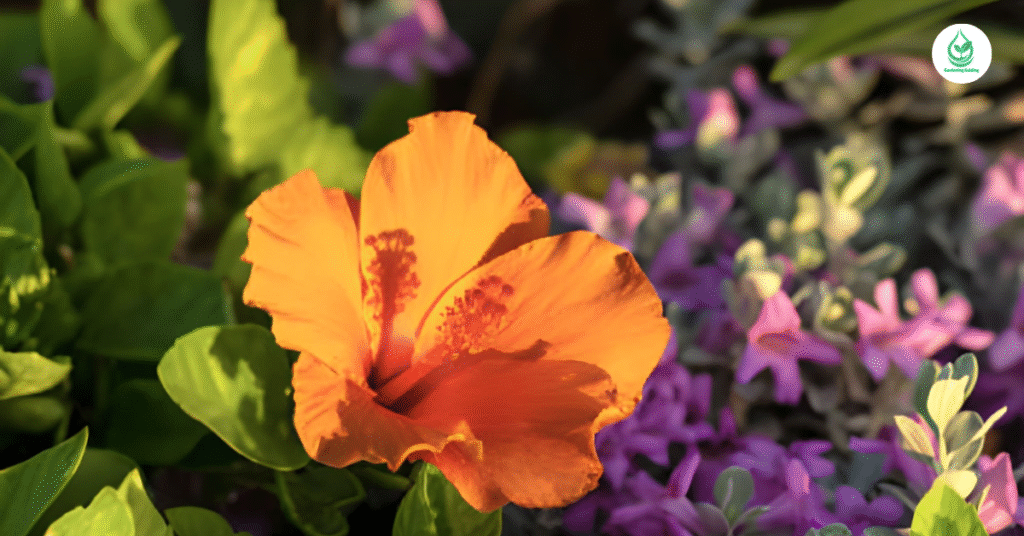
Comparison Table: Hibiscus vs. Other Flowering Plants
| Feature | Hibiscus | Rose | Lily | Bougainvillea |
| Light Needs | Full Sun | Partial Sun | Full Sun | Full Sun |
| Water Requirement | Moderate to High | Moderate | Low | Low |
| Soil Type | Slightly Acidic | Loamy | Moist | Sandy |
| Flower Lifespan | 1 Day | Several Days | 5–7 Days | Long-lasting |
| Maintenance | Medium | High | Low | Medium |
| Attracts Pollinators | Yes | Yes | Yes | Yes |
| Best Use | Tropical Gardens | Romantic Gardens | Pondsides | Fences & Arbors |
Conclusion
The 6 Hibiscus varieties offer an extraordinary blend of beauty, purpose, and diversity. From the edible Roselle to the color-changing Confederate Rose, every species adds a unique charm to your garden. Their vibrant colors, large petals, and lush foliage bring tropical joy to any environment.
While hibiscus requires care consistent watering, bright sunlight, and protection from pests the reward is worth every effort. Whether you’re decorating your balcony, enhancing your backyard, or sipping hibiscus tea, these plants enrich your surroundings and your lifestyle.
With love and the right care routine, your Hibiscus garden can become a blooming paradise that reflects both nature’s strength and its delicate artistry.

